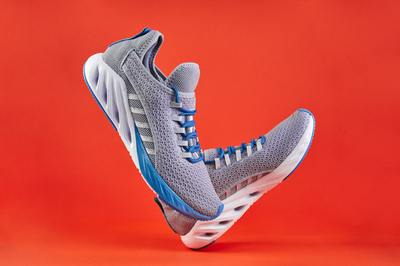Are the New Highly Cushioned Running Shoes Good for My Back?
 The relationship between highly cushioned running shoes and back health is complex and depends on various factors, including an individual’s running style, foot strike pattern, body weight, and the presence of any pre-existing conditions.
The relationship between highly cushioned running shoes and back health is complex and depends on various factors, including an individual’s running style, foot strike pattern, body weight, and the presence of any pre-existing conditions.
Here’s What the Experts Suggest:
- Shock Absorption: Highly cushioned running shoes, often referred to as “maximalist” shoes, are designed to absorb impact forces that occur during running. This can theoretically reduce the stress on the lower back by minimizing the shock that travels up the leg and into the spine.
- Running Mechanics: Some studies suggest that cushioned running shoes can alter running mechanics. They might encourage a runner to strike more with their heel (heel striking) rather than the midfoot or forefoot, which can change the distribution of impact forces. The impact on back health would depend on whether this alteration in running mechanics reduces or increases stress on the lower back.
- Individual Differences: The benefits or drawbacks of cushioned running shoes can vary widely among individuals. For some, the added cushioning may provide relief from back pain by reducing impact forces. For others, especially if the shoes do not match their natural gait or running style, they could potentially lead to discomfort or injury.
- Alignment and Support: Proper alignment and support are crucial for preventing back pain. Some highly cushioned shoes may offer sufficient arch support and help maintain proper alignment. However, if a shoe does not adequately support the foot or encourages poor running form, it could contribute to back issues.
- Adaptation Period: Switching to highly cushioned running shoes might require an adaptation period, during which the body adjusts to the new mechanics. During this time, it’s important to be mindful of any new pain or discomfort that could indicate a poor fit for your running style or a need for a different type of support.
- Scientific Research: The scientific community has not reached a consensus on the impact of highly cushioned running shoes on back health. Research in this area is ongoing, and findings can sometimes be contradictory. Some studies suggest benefits in reducing impact forces, while others highlight potential changes in running mechanics that may not be beneficial for everyone.
So, whether highly cushioned running shoes are good for the back depends on the individual runner. It’s important for runners to choose shoes based on their specific needs, preferences, and any advice from healthcare professionals. For those with existing back issues, consulting with a physical therapist or a specialist in sports medicine might be particularly beneficial to find the most appropriate footwear.
